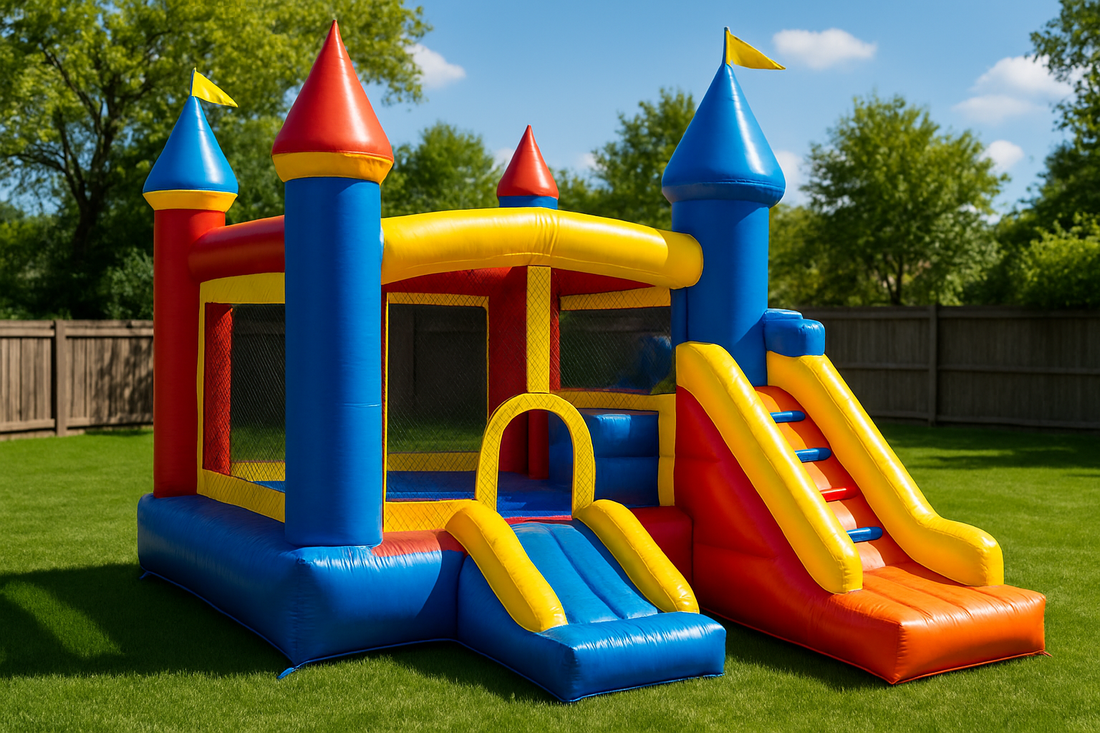
Choosing and Maintaining PVC Inflatable Fabrics: A Complete Guide
Share
PVC inflatable fabrics are widely used in applications ranging from boats, water parks, and inflatable tents to advertising structures and industrial products. Their popularity comes from their durability, versatility, and cost-effectiveness. However, choosing the right PVC inflatable fabric and maintaining it properly are crucial to ensure performance, safety, and long lifespan.
1. Key Factors in Choosing PVC Inflatable Fabrics
When selecting PVC-coated fabric for inflatable structures, consider the following criteria:
a. Fabric Weight (GSM/oz per sq. yd)
Lighter weight fabrics (500–650 gsm): Suitable for smaller inflatables such as toys, advertising balloons, and portable air mattresses.
Medium weight fabrics (750–900 gsm): Ideal for inflatable tents, SUP boards, and sports equipment.
Heavy-duty fabrics (1000–1350 gsm): Recommended for industrial inflatables, boats, and structures exposed to high pressure and abrasion.
b. Base Fabric Yarn & Density
Common choices: 500D, 1000D polyester with varying densities.
A higher yarn denier and tighter weaving (e.g., 1000D × 1000D, 23 × 23) provide superior tensile strength and tear resistance.
c. Surface Treatments
PVC standard coating: Economical, waterproof, and versatile.
PVDF or acrylic topcoat: Improves UV resistance, weather durability, and self-cleaning properties.
Embossed surface (anti-slip): Used for inflatable floors, boats, or SUP boards.
d. Performance Standards
UV Resistance: Protects against sun damage in outdoor use.
Flame Retardancy (B1/B2/NFPA 701): Important for public safety in tents or event structures.
Air Tightness: Ensures long-lasting inflation with minimal air leakage.
2. Best Practices for Maintaining PVC Inflatable Fabrics
Proper care can significantly extend the service life of PVC inflatables. Follow these maintenance guidelines:
a. Cleaning
Use mild soap and water with a soft brush or sponge.
Avoid harsh chemicals, solvents, or abrasives that may damage the PVC coating.
Rinse thoroughly and let the fabric dry completely before storage.
b. Storage
Deflate and fold the inflatable neatly.
Store in a cool, dry, and ventilated place, away from direct sunlight and heat sources.
Avoid long-term compression to prevent creases or cracks in the fabric.
c. Handling & Repairs
Do not drag the inflatable on rough surfaces to prevent abrasion.
Patch small punctures with a PVC repair kit using adhesive and a matching fabric patch.
For larger damages, professional hot-air welding is recommended to restore airtight performance.
d. UV & Weather Protection
Limit prolonged exposure to direct sunlight when not in use.
Apply UV-protective sprays or covers if the inflatable will be outdoors for extended periods.
3. Common Applications of PVC Inflatable Fabrics
Recreational: Inflatable boats, SUP boards, water slides, air mattresses.
Commercial: Advertising balloons, inflatable arches, promotional tents.
Industrial & Safety: Oil booms, floating barriers, rescue rafts, flexible tanks.
4. Final Thoughts
Choosing the right PVC inflatable fabric is about balancing weight, strength, coating, and performance standards for your intended use. With proper maintenance—cleaning, careful storage, and timely repairs—PVC inflatable fabrics can deliver excellent durability and cost efficiency for years.
If you’re sourcing high-quality PVC inflatable materials, look for suppliers with strict quality control, customizable options, and proven industry certifications to ensure safety and performance.
